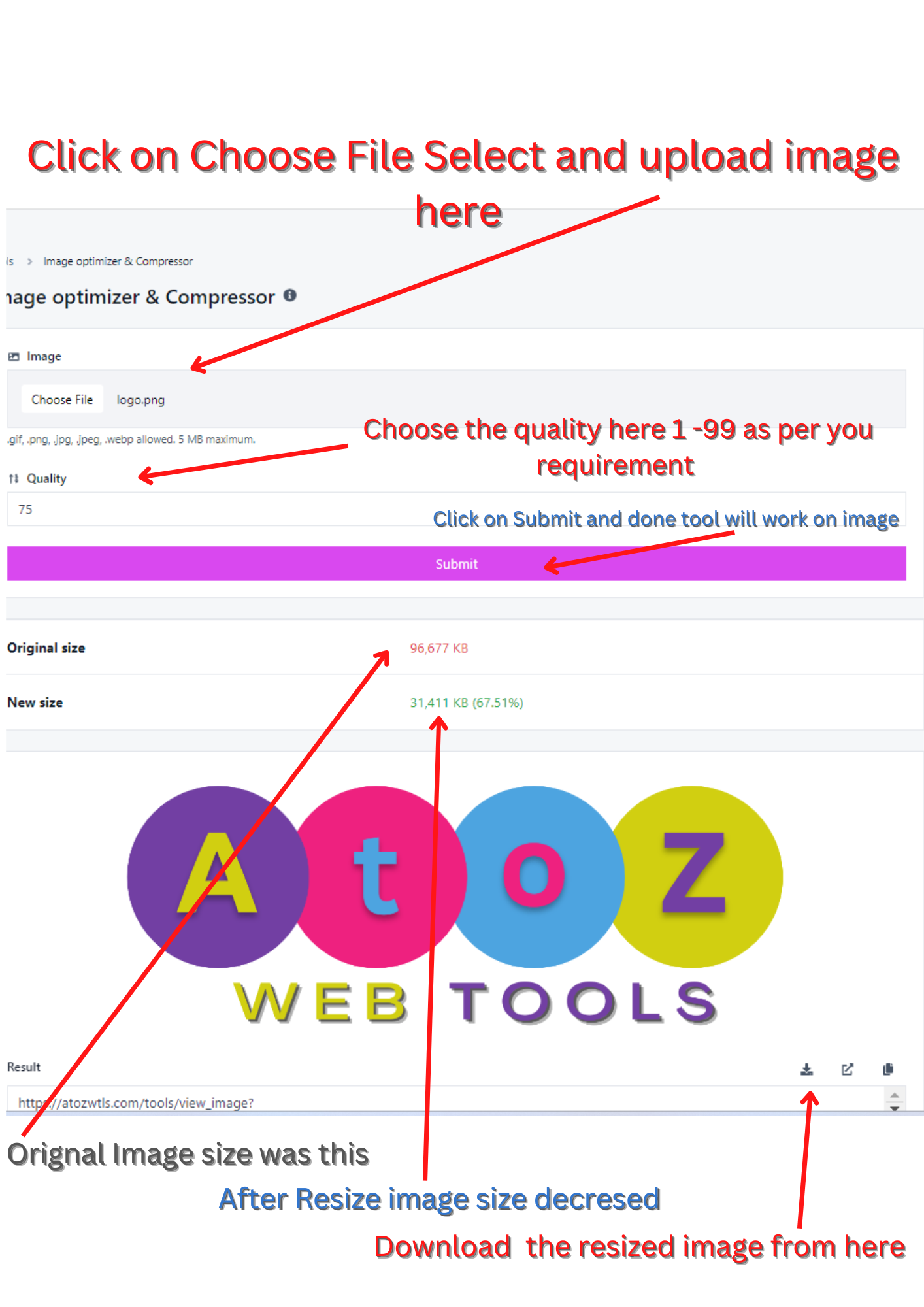Image optimizer & Compressor
Image Optimization and Compression - Why it Matters and How to Do it Right

In today's digital world, images play a crucial role in enhancing the visual appeal and user experience of websites, online platforms, and even email communications. However, large or poorly optimized images can have a detrimental impact on the performance of these digital assets. They can slow down page loading times, consume large amounts of bandwidth, and negatively impact user engagement. This is where image optimization and compression come into play.
What is Image Optimization? Image optimization refers to the process of reducing the file size of an image while preserving its quality. The goal of image optimization is to make images load faster on websites and other digital platforms, improving the user experience and reducing bounce rates. There are various ways to optimize images, including resizing, cropping, reducing color depth, and compressing the image file.
What is Image Compression? Image compression is a type of image optimization that reduces the file size of an image by removing or reducing redundant or irrelevant data. Image compression algorithms analyze the image data and eliminate information that is not critical to the visual quality of the image. The result is a smaller file size that can be loaded faster and consumed less bandwidth.
Why is Image Optimization and Compression Important? Image optimization and compression are important for several reasons. Firstly, images can make up a significant portion of a website's page weight, and large images can slow down page load times, impacting user engagement and search engine optimization. Secondly, large images can consume a lot of bandwidth, incurring additional costs for website owners and impacting the user experience for those with slow internet connections. Lastly, well-optimized images can enhance the visual appeal of a website and improve user experience.
How to Optimize and Compress Images? There are several ways to optimize and compress images, including the following:
-
Resizing: Resizing images to an appropriate size can significantly reduce their file size. Large images should be resized to the exact dimensions required for their intended use.
-
Cropping: Cropping images to remove unwanted parts can also reduce their file size.
-
Reducing Color Depth: Reducing the number of colors used in an image can reduce its file size.
-
Compressing Image Files: Image compression tools, both online and offline, can be used to compress image files. Some popular online image compressors include Compressor.io, TinyPNG, and Kraken.io. Image editing software such as Adobe Photoshop also has built-in image compression options.
Conclusion Image optimization and compression are critical components of effective digital asset management. By reducing image file sizes, website owners can improve page load times, reduce bandwidth consumption, and enhance user experience. There are several tools and techniques available to optimize and compress images, making it easy for anyone to implement. Whether you're a website owner, digital marketer, or content creator, investing time and effort into optimizing and compressing your images can pay off in the long run.
Popular tools
Take an IP and try to look for the domain/host associated with it. Find all the domains hosted on an IP address using reverse IP location lookup. Discover the websites that share the same server as yours and troubleshoot any server-related
Get all possible details about an SSL certificate. An SSL certificate provides a secure connection between a website and a users web browser. Ensure your website SSL certificate is up-to-date and valid with SSL lookup tools. Check the expiration date, issuer, and other details of your SSL certificate to maintain the security of your website.
Convert IDN domain names to punycode using IDN punycode converter tools. Convert domain names to punycode format for use in URLs and ensure the proper display of non-ASCII characters. Easily convert IDN to Punnycode and back.
Check if your websites URL redirects are working correctly using URL redirect checker tools. Analyze HTTP redirects and troubleshoot any issues to ensure your website is accessible to users. Check for 301 & 302 redirects of a specific URL. It will check for up to 10 redirects.
Get details of any file type, Check the file type and extension of a file using file mime type checker tools. Identify the mime type and file extension of any file and ensure it is the correct type.
Convert text to hexadecimal and the other way for any string input.